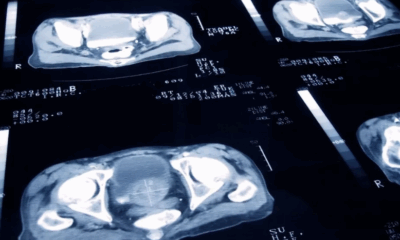Health
Is Eight Hours of Sleep Enough? Experts Weigh In on Sleep Quality and Health
The long-standing recommendation of eight hours of sleep per night has been widely accepted, but sleep experts suggest that the ideal amount of rest varies from person to person. More important than the number of hours is waking up feeling refreshed, they say.
The Importance of Sleep for Overall Health
Sleep remains a critical yet mysterious function of human health. Dr. Rafael Pelayo, a sleep specialist at Stanford University, describes sleep as the most natural form of self-care. “Something remarkable happens when you sleep,” he says, emphasizing its role in maintaining overall well-being.
While most people thrive on seven to nine hours of sleep, those who consistently sleep less than six hours or more than nine may face an increased risk of health problems, according to Molly Atwood, a behavioral sleep medicine clinician at Johns Hopkins. However, individual sleep needs vary, and quality matters just as much as quantity.
“If someone sleeps many hours but wakes up feeling tired, something is wrong,” Pelayo notes, likening it to leaving a favorite restaurant still feeling hungry.
How Sleep Needs Change Over Time
The amount of sleep required evolves throughout a person’s life. Newborns need the most—between 14 to 17 hours—due to rapid growth and development. As children grow older, their sleep needs decrease.
According to the National Sleep Foundation, adults between the ages of 26 and 64 should aim for seven to nine hours per night, while older adults can manage with slightly less. Young adults aged 16 to 25, however, may require a bit more sleep.
Sleep cycles, which last approximately 90 minutes, also change as we age. In the early part of the night, deep sleep helps with physical restoration, including the release of growth hormones. Later in the night, rapid-eye movement (REM) sleep becomes more prominent, aiding in learning and memory consolidation. Children experience more deep sleep, but this decreases during adolescence as the body requires less repair.
Gender Differences in Sleep Patterns
Though research does not show that women inherently need more sleep than men, studies indicate they tend to get slightly more sleep on average. However, teenage girls often report sleeping less and experiencing insomnia more frequently than teenage boys, says Pelayo.
Sleep disruptions also increase for women during major life transitions. First-time mothers, for example, often lose sleep while caring for newborns. Hormonal changes during pregnancy, menopause, and even menstrual cycles can impact sleep quality and duration.
When to Seek Help for Sleep Issues
Persistent fatigue despite adequate sleep could be a sign of an underlying health condition. Sleep deprivation can lead to mood changes, irritability, and inattentiveness, but long-term consequences are more serious.
“If you’re not getting enough sleep or have untreated insomnia or sleep apnea, your risk of depression increases,” Atwood warns. She also highlights a higher risk of cardiovascular issues, weakened immune function, and even an increased likelihood of Alzheimer’s disease.
If sleep problems persist, experts recommend consulting a doctor to rule out medical conditions. A sleep specialist may also be necessary to address ongoing issues, ensuring that sleep remains a restorative and health-promoting process.
Health
Europe Faces Growing Challenges in Meeting Medical Care Needs, EU Report Shows

A new report has highlighted stark disparities in healthcare access across Europe, revealing that a growing number of citizens face unmet medical needs due to systemic issues such as high costs and long waiting times.
According to the latest data from Eurostat and the Health at a Glance: Europe 2024 report, 3.8 per cent of EU residents aged 16 and over reported unmet medical needs in the past year. However, the percentage climbs significantly when focusing solely on individuals who actively required healthcare services — with some countries reporting unmet needs among over 20 per cent of this group.
The causes are twofold: healthcare system barriers, including long waiting lists and treatment costs, account for 2.4 per cent of all cases, while 1.4 per cent stem from personal reasons such as fear of doctors, lack of time, or lack of knowledge about available care.
Unmet healthcare needs vary widely across the continent. Estonia tops the list within the EU, with 15.5 per cent of people reporting unmet needs, followed closely by Greece and Albania, each over 13 per cent. Even wealthier Nordic countries show surprising figures — Denmark (12.2 per cent), Finland, and Norway (over 7.5 per cent) — despite high healthcare spending. Conversely, countries such as Germany (0.5 per cent), Austria (1.3 per cent), and the Netherlands (1.4 per cent) report the lowest levels, pointing to more efficient and accessible healthcare systems.
Cost is a dominant barrier in nations like Greece and Albania, where over 9 per cent of citizens cited unaffordable care. In contrast, long waiting times are the primary issue in countries like Estonia (12 per cent) and Finland (7.5 per cent).
Income inequality also plays a major role. On average, 3.8 per cent of low-income individuals across the EU report unmet needs due to healthcare system issues — more than triple the 1.2 per cent reported by higher-income groups. In Greece, that gap is particularly wide, with 23 per cent of low-income respondents affected.
Healthcare experts say these disparities reflect more than just economic factors. Dr. Tit Albreht, President of the European Public Health Association (EUPHA), noted, “Unmet health needs arise from different reasons, including how well healthcare governance integrates services to meet population needs.”
Industry leaders, such as Tina Taube of the European Federation of Pharmaceutical Industries and Associations (EFPIA), stressed the importance of timely access to diagnosis and treatment. “Unmet needs are context-specific,” she said. “It’s not just about product availability, but also healthcare system readiness.”
Andy Powrie-Smith of EFPIA added that patients in some European countries wait up to seven times longer than others for the same treatments due to regulatory delays and varying national infrastructures.
The findings underscore the need for a more coordinated, equitable healthcare strategy across the continent, especially as Europe faces the challenges of an ageing population and increasingly complex medical technologies.
Health
Chinese Nationals Charged in U.S. with Smuggling Toxic Fungus Labeled a Potential Agroterrorism Threat

U.S. federal authorities have charged two Chinese nationals in connection with smuggling a dangerous agricultural fungus into the country, a move investigators describe as posing significant national security risks.
Yunqing Jian, 33, and Zunyong Liu, 34, are accused of conspiracy, smuggling, making false statements, and visa fraud after allegedly attempting to bring Fusarium graminearum — a toxic fungus capable of devastating crops and harming humans and livestock — into the United States. The case was detailed in a court filing by the Federal Bureau of Investigation (FBI) in Detroit.
The fungus, which targets essential food staples like wheat, maize, barley, and rice, is described in a scientific journal cited by the FBI as a “potential agroterrorism weapon.” Experts warn that its spread could inflict serious damage on global food security and agricultural economies.
U.S. Attorney Jerome Gorgon Jr. emphasized the seriousness of the case, stating: “The alleged actions of these Chinese nationals, including a loyal member of the Chinese Communist Party, are of the gravest national security concerns.”
Jian made her first appearance in a Detroit federal court on Tuesday and remains in custody awaiting a bond hearing scheduled for Thursday. A court-appointed attorney for her initial appearance declined to comment.
According to the FBI’s complaint, the investigation began in July 2024 when Liu was stopped at Detroit Metropolitan Airport. During a routine screening, customs officials discovered suspicious red plant material in his backpack. Liu initially claimed not to know what it was but later admitted he planned to use it for research purposes at the University of Michigan, where Jian is currently employed and where Liu previously worked.
Authorities say Liu’s mobile phone contained an article titled “Plant-Pathogen Warfare under Changing Climate Conditions,” raising further concerns about the intended use of the samples. The FBI believes the two individuals were coordinating to introduce the pathogen into a U.S. research setting without proper clearance or oversight.
Liu was denied entry to the U.S. and deported in July. Charges against both individuals were filed this week, as prosecutors continue to investigate the scope of the alleged conspiracy.
The case underscores growing concerns in the U.S. over biosecurity and potential misuse of scientific research amid rising geopolitical tensions.
Health
US Expands Measles Vaccination Guidance Amid Global Surge in Cases
-

 Business1 year ago
Business1 year agoSaudi Arabia’s Model for Sustainable Aviation Practices
-

 Business1 year ago
Business1 year agoRecent Developments in Small Business Taxes
-

 Politics1 year ago
Politics1 year agoWho was Ebrahim Raisi and his status in Iranian Politics?
-

 Business11 months ago
Business11 months agoCarrectly: Revolutionizing Car Care in Chicago
-

 Business11 months ago
Business11 months agoSaudi Arabia: Foreign Direct Investment Rises by 5.6% in Q1
-

 Technology1 year ago
Technology1 year agoComparing Apple Vision Pro and Meta Quest 3
-

 Politics1 year ago
Politics1 year agoIndonesia and Malaysia Call for Israel’s Compliance with ICJ Ruling on Gaza Offensive
-

 Sports10 months ago
Sports10 months agoKeely Hodgkinson Wins Britain’s First Athletics Gold at Paris Olympics in 800m


























